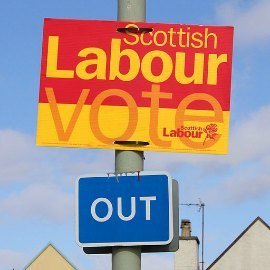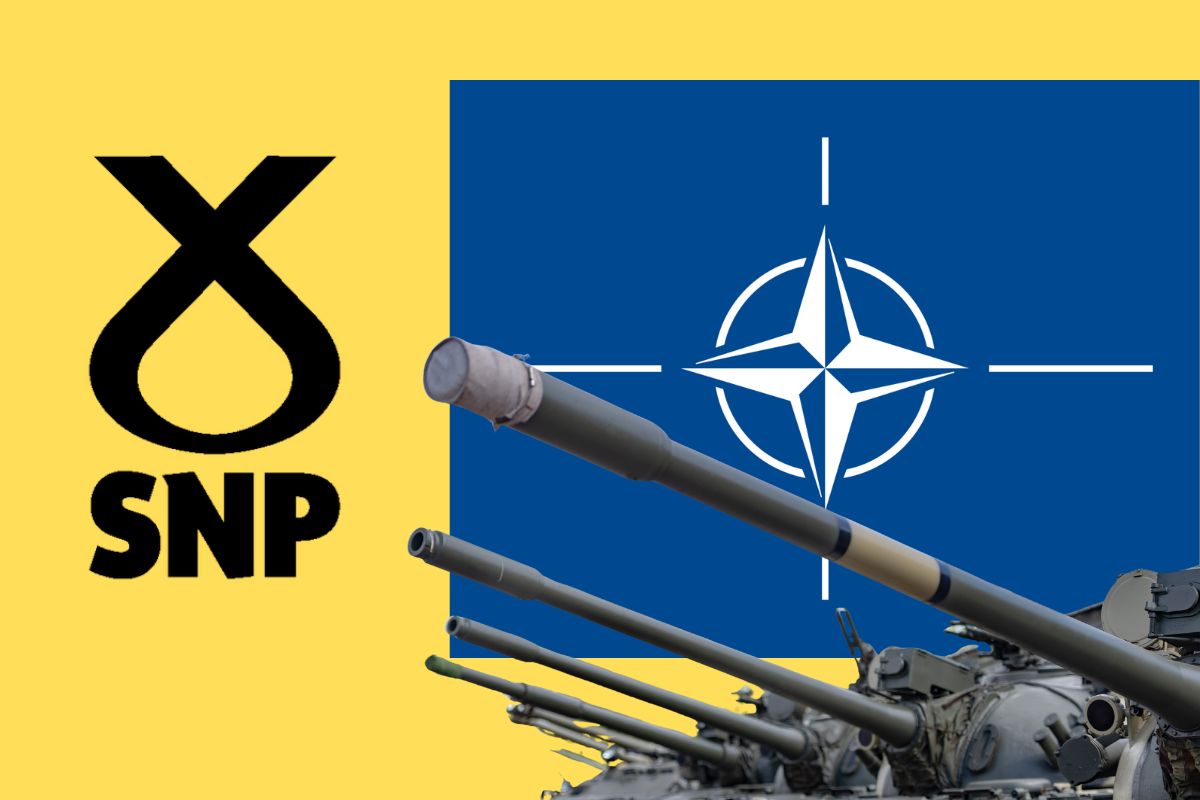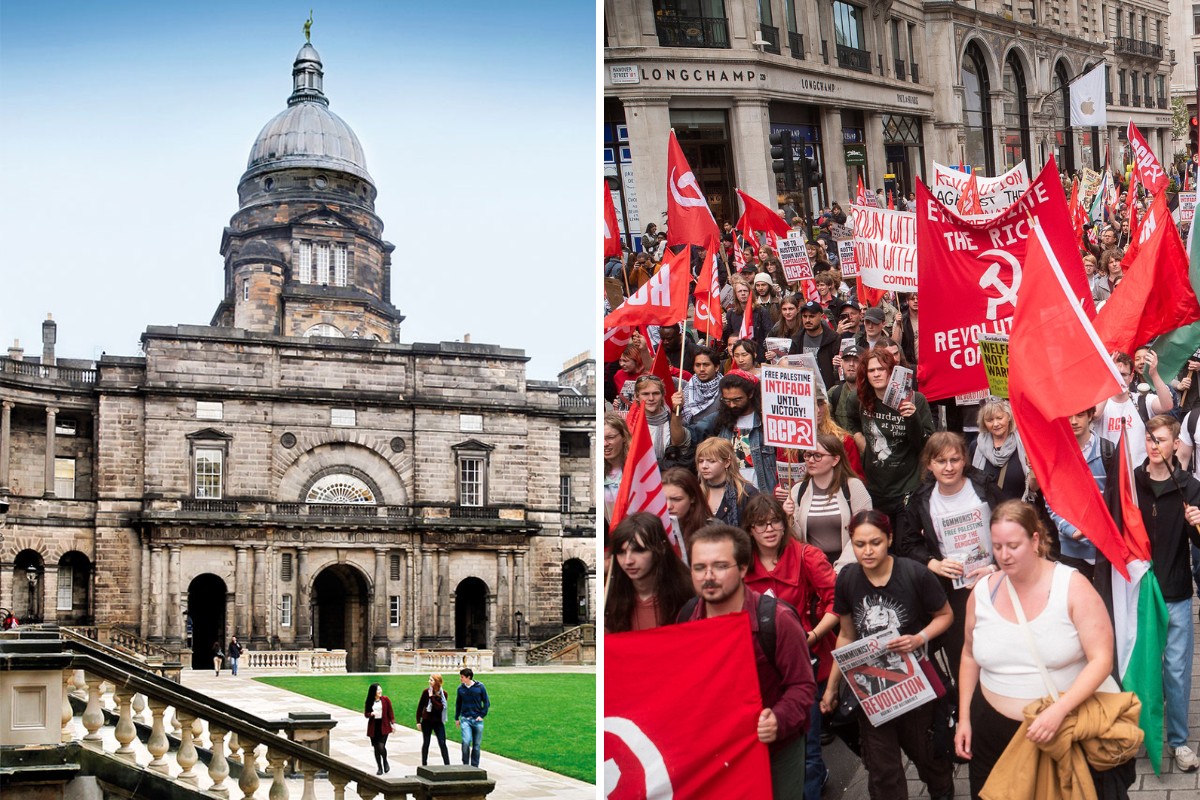We live in turbulent times. Across Europe, the old parties of the social democracy are facing perhaps the deepest set of crises in their history. Britain has not been immune to this. Following the independence referendum and a collapse in its support, and with a leadership election on the horizon, Scottish Labour is facing a crisis of its own.
We live in turbulent times. Across Europe, the old parties of the social democracy are facing perhaps the deepest set of crises in their history. Britain has not been immune to this.
The French Socialist Party, which came to power on a platform of “tax the rich”, is now deeply unpopular after instead implementing severe austerity measures. So deep is the capitalist crisis, and so efficient are the ruling classes in evading tax, that such a “solution” was doomed from the start. The official unemployment rate has risen to over 10% although the true figure, including underemployment, is certainly higher than this. Two years into the job and President Hollande has already faced ministerial resignations, embarrassing allegations about his personal life, and polls indicating he is the least popular French premier ever. One ignominy after another has been compounded by his party’s disastrous showing this year in the Senate, municipal and European elections.
Travelling south to Spain: three years after being in power, following its hammering in the 2011 General Election, the Spanish Socialist Party (PSOE) remains as unpopular as it has ever been. In spite of the right-wing PP government’s disastrous management of the crippled Spanish economy and reactionary attempts to shore up its base by pushing through changes to abortion law, the PSOE has consistently polled at the low/mid 20s – lower than their share at the General Election. A new left political party, Podemos, was formed earlier this year. This has arisen from the massive movement of Spanish workers and youth and the lack of a serious alternative being presented by Izquierda Unida (United Left). Podemos currently leads the polls, although would not have enough for a majority in parliament.
The crisis we see everywhere is, as Trotsky explained, a crisis of leadership. The ruling classes and capitalist system they defend are weaker than at any point in history. The rotten old order needs but a small shove for it to crumble to dust across the world. The forces used in the past to divide and smash the workers movement are feeble. The working class is larger and more globalised than ever before. Yet where is the socialist leadership of the working class movement? Again at this crucial juncture in history it is the leaders of the labour movement that are the only serious obstacle to revolutionary change.
Ignored and betrayed
In Britain, four years into one of the most unpopular Westminster governments in modern history, Labour is currently running neck and neck with the Tories. In spite of an all-out war on the working class – including the biggest fall in living standards in living memory, deep cuts and privatisations of public services, inhuman victimisation of immigrants, the unemployed and disabled – Labour has struggled to put much distance between itself and the Conservatives. Little wonder, given all that ‘Red Ed’ has offered is a salmon-pink version of Tory austerity. With only six months to go until the 2015 General Election, panic has set in among Labour backbenchers and the Shadow Cabinet, with repeated rumours of a coup to unseat Miliband.
Scottish Labour has not been immune to this process either. Whilst the SNP has successfully placed itself on a programme of free prescriptions and resisting the bedroom tax (at the same time as pushing a public sector wage freeze and cuts to local government), Scottish Labour has bumbled from one unpopular right-wing farce to another. Whether it was the ridiculous proposal in 2011 of “carry a knife, go to jail” or Johann Lamont’s Thatcherite quip about ending Scotland’s “something for nothing culture”, the party’s leadership has only succeeded in further alienating sections of its working class base.
The unholy alliance that Lamont, Murphy, Sarwar and the amorphous rest entered into with the Tories as part of the Better Together campaign was the logical conclusion of this trend. On the night of the referendum, nearly 40% of Labour supporters turned toward a Yes vote, in spite of their party’s stance.
Such is the lack of authority that the Labour leaders hold that many working class people turned toward a Yes vote in the hopes of something better. A majority in Labour heartlands such as West Dunbartonshire, North Lanarkshire and Glasgow all voted in favour of Yes. These are places where the old adage that a donkey in a red rosette could get elected has almost been borne out, given the quality of many who have represented constituencies here. There is a seething anger at the role that the party has played, possibly greater than at any time in history. Former Labour voters feel ignored and betrayed by the party. Labour has become increasingly viewed as simply another party of the Establishment.
Labour facing oblivion
A recent STV poll predicted that if a general election was held now Labour would be annihilated, receiving only 23% of the vote (down from 42% in 2010) and giving the party only four seats across Scotland (instead of 40). The SNP would grow from six seats to 54. Another poll by YouGov for the Times suggested Labour would get ten seats. This has provoked a deep crisis within Scottish Labour.
Not long after the pyrrhic referendum victory for Lamont, there was already talk of the knives being sharpened and a backroom coup against her. Even during the campaign, Jim Murphy’s leading role (and gimmicky “100 Streets” campaign, where he inflicted himself on much of the populace atop an Irn Bru crate) were talked about in the media as his audition for the role of Scottish Labour leader. Very interestingly, in early October reports emerged in the Scottish press about how “senior Labour figures” had criticised the party’s positioning and urged that it needed to move leftwards in order to avoid electoral annihilation at the hands of the SNP. Margaret Curran of all people urged for Labour to return to “socialist principles” and to distance the party from Blair and New Labour [Sunday Herald, 19/10/14].
We would be immensely naïve to think that the Labour leadership have suddenly had a damascene moment inspired by a vision of Karl Marx. These splits among the leadership reflect a panic at the electoral abyss that is beginning to open up. As the saying goes, with heat, even a solid can turn to liquid. Some elements, therefore, recognise that if Labour carries on down this path then it could mean oblivion for the party.
Figures such as Murphy represent the other side of this trend. He has been sharply critical of any left turn, saying that “galloping off leftward” would be a big mistake. “The SNP would love it if we did that.” [FT, 09/11/14] He has not actually come out with any specific policies, although undoubtedly they would represent his Blairite brand with a veneer of tartan paint. Figures on the right of the party such as Murphy are not immune either to recognising the deep problems facing them, but are unprepared to be pushed into an open confrontation with the Westminster parliamentary leadership.
Candidates from the left
Step forward Neil Findlay. An MSP of three years and shadow health minister at Holyrood, he penned an article published in the Morning Star on the 22nd October urging Labour to “outflank the SNP from the left”. He correctly said the response to Labour’s malaise is not simply one of organisational restructuring, but a political change, and called for a programme including demands such as full employment, council house building and trade union rights among others.
With this swirling in the background, two days later on Friday 24th October Johann Lamont resigned. Speculation mounted as to whether this would be a straight fight between Murphy and Findlay. However, Findlay delayed his announcement until 29th October, having firstly been in favour of Gordon Brown of all people for leader of Scottish Labour.
Sarah Boyack also pushed herself onto the stage and looks likely to be the foil that attempts to split the Findlay vote. Her programme is primarily based on “unifying the party” and some vague left demands surrounding the living wage and others. As we know ‘party unity’ is the oldest trick in the book of the Labour right, used to quash dissent from the left in favour of the leadership.
The battle for deputy triggered by the resignation of Sarwar is also a left-right split, with left-winger Katy Clark MP facing party choice Kezia Dugdale MSP.
Party machine backs Murphy
The nominations and support from affiliated organisations also point toward how this will play out. The vast majority of parliamentary nominations (43) were in favour of Jim Murphy, with only 12 MSPs or Scottish MPs and MEPs nominating Findlay. Boyack received even less. For Deputy, Dugdale received 45 nominations, with Katy Clark receiving just 11. The parliamentary groupings are clearly set to swing behind Murphy for leader. However, Findlay and Clark have received the backing of one union after another, from Unite and Unison to the GMB, UCATT and others.
This has echoes of the brothers Miliband contest in 2010, when David received greater support from parliamentarians whilst Ed got greater backing from the unions.
However the way that a leader is elected, with votes unfairly weighted in favour of the party machine, may mean this is a close contest. In the vote, MPs, MSPs and MEPs count for one third of the overall votes, with unions and affiliates another third. Individual members account for the final third.
The contest has certainly stirred things up within the Labour Party. The Campaign for Socialism has endorsed Findlay and the left regard his challenge as a potential break-through, in Scotland and in the rest of the UK. Some have described Findlay-Clark as a “dream ticket”. Clearly, in a fight between Murphy – an out-and-out Blairite candidate – and supporters of the left, there should be no dispute as to who to vote for. The result will be known on 13th December.
How left is left?
Neil Findlay’s candidature raises much broader questions. How left is left?
According to his article in the Morning Star (22/10/14) he stands for: a principle of full employment; supports a national house-building programme; would set up a living wage unit “that would use grants, procurement and every lever of government to raise the minimum wage to a living wage”; re-democratise local government to allow councils to raise their taxes and reverse job losses across councils; end the social care scandal; create quality apprenticeships; review the NHSl; support a charter of workers’ rights; and introduce “an industrial policy that promotes manufacturing and new sustainable jobs”. Elsewhere in the Scotsman (17/11/14) Findlay has stated his support to scrap Trident, renationalise the railways, and end private finance contracts in the NHS.
These are admirable aims. But there is no mention of capitalism or socialism anywhere. Even nationalisation is only mentioned in relation to the railways, with no mention of the banks or other major monopolies, which hold all the wealth and real power in society in their hands. It is not a question of good intentions – but of how such a programme can be carried out under capitalism, which is in a dire crisis. Capitalism can no longer afford reforms and as a result we have capitalist austerity. Katy Clark says she is against austerity, which is good. She is one of the very few socialist Labour MPs. But what is the alternative to austerity when the left candidates cannot look beyond the confines of a capitalist system?
Only the nationalisation of the big monopolies and banks will allow us to control the economy and use it in the interests of working people. You cannot plan what you don’t control, but you don’t control what you don’t own. It is as simple as that.
Given the retreats over the last 25 years, the left in the Labour Party has been reduced to a small rump. Findlay’s programme, although better than what the other candidates are offering, is still far behind what the Labour left of the 1970s and 80s was calling for. This is hardly surprising when Findlay’s first choice for party leader was Gordon Brown, that well-known militant – the “Iron Chancellor” of Blair, who kept to Tory spending plans, described Labour as a “party of business”, whole-heartedly supported Blair’s counter-revolution in the party, and was a key component of the pro-capitalist leadership. To have illusions in Brown shows a confused outlook.
Class struggle and historic events
Those who believe that a victory for Findlay will comprehensively transform the situation do so from good intentions; but we must take stock of the situation as it exists. Only on the basis of class struggle and historic events will the left re-emerge as a serious force in the Labour movement. Findlay may be genuine and honest, but without a strong left layer in the party and the broader movement to base himself upon, he will be pushed hither and thither by the pressures of the party machine and capitalism.
The left will not be built by such “lefts”. The left in the movement will be created, as was the case in the 1970s, from big events. To believe there is a short cut in this process is false. Today, the left in Labour is in a shambles across the country, a reflection of the emptying out of the Labour Party over the last 25 years or more. It is the weakest it has been in its history. The Labour Representation Committee has lost a third of its members and is now down to 600 – in a party of 190,000. It is teetering on the verge of collapse. Even its house magazine, Labour Briefing, stated in its most recent issue: “The Labour Left faces a stark choice: improve our game rapidly or descend into complete irrelevance.” (Labour Briefing, November 2014)
Things look bleak for the Labour Party in Scotland. Its decline has been going on for years. Infested with careerists, it has lost touch with the people it was supposed to represent. New Labour pushed it toward being openly pro-capitalist, despite resting on the trade unions and the working class. This would eventually take its toll. The sight of the party’s leaders climbing into bed with the Tories and Liberals during the Referendum was the last straw for many, who turned away in disgust. The role of the leadership in bandying behind a reactionary Queen and Country campaign during the referendum has made the standing of the party in Scotland very toxic, especially among the politicised youth and most oppressed layers of the working class.
As opposed to Jim Murphy, the election of Findlay would be a step forward. However there are fundamental flaws to imagining that this would be sufficient to transform Labour into a viable vehicle for working people. Firstly, that would require a split and the spewing out of the right wing. Secondly, it would require the adoption of a bold socialist programme. Findlay has talked of reforms, but these would bring him into a direct confrontation with the Westminster leadership. Findlay’s programme could only ever be carried out on the basis of a socialist transformation of society with public ownership and control of the heights of the economy.
Reformism or revolution?
Capitalism has no reforms to give. The global crisis is of such a magnitude that it seeks to claw back every victory, no matter how small, that the workers’ movement has gained in the past. The case of the Hollande government in France is a warning to that end.
In order to build toward this programme – to face both the opposition in his own party as well as from capitalism itself – Findlay would need to mobilise the mass of workers and youth to support it. Without this, the likes of Murphy will still hover, vulture like, looking to make their move. At present many of these same people – the workers and youth needed to support a programme of real change – are disenchanted, disgusted or outright hostile to Labour, who they see as an ‘establishment party’.
The period we are in is one of very sharp and sudden changes. We have seen bursts here and there which are expressions of the deep discontent, frustration and anger that exist in society. At present in Scotland there has been a large politicisation of youth which has been largely expressed through the various pro-independence organisations, but not entirely. Tens of thousands have been radicalised and are even open to revolutionary ideas. The ideas of reformism or nationalism, which attempt to patch up capitalism, offer nothing for working people. We are, of course, interested in reforms where they can be won. But we also have to tell the truth that, on the basis of capitalist crisis, such reforms are only short-lived. It is the task of Marxism to win those open to revolutionary ideas and offer a real way out of the crisis.
There is a deep appetite in society for a greater and more fundamental change. The working class internationally has shown time and time again that it is prepared to fight for it. Yet it lacks a concrete direction. What we need is a revolutionary socialist transformation of society!






